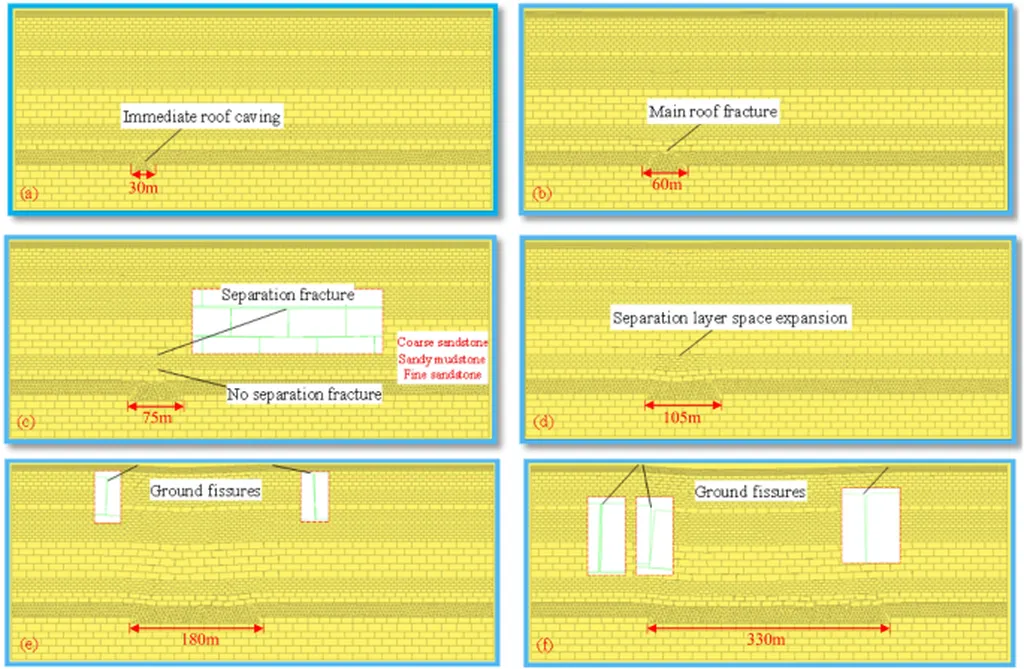In the heart of China’s Henan province, researchers are unraveling the intricate dance of fractures in gas-containing coal, a discovery that could reshape the energy sector’s approach to safety and efficiency. Dr. Dengke Wang, from the School of Safety Science and Engineering at Henan Polytechnic University, has led a groundbreaking study that delves into the influence of gangue interlayers on fracture evolution in coal, with profound implications for gas outburst prevention and control in coal mines.
The research, published in the esteemed Journal of Engineering Sciences, employed a triaxial loading system to simulate the complex conditions deep underground. By subjecting coal samples to varying gas pressures and gangue interlayer configurations, Wang and his team were able to observe and quantify the evolution of fractures within the coal. “We found that the failure mode of gas-containing coal samples exhibits significant shear failure,” Wang explains. “The presence of gangue interlayers significantly alters the fracture patterns and their propagation.”
The study revealed that as gas pressure increases, the coal samples exhibit more complex fracture patterns, with shear cracks developing into composite forms such as parallel and cross cracks. However, the introduction of gangue interlayers changes the game. “Fractures in the gangue interlayer samples are mainly concentrated in the coal part, with only one or two main fractures extending to and penetrating the gangue interlayer within the rock part,” Wang notes. This indicates that the gangue interlayer is less damaged, and obvious faulting occurs in the 3D fracture network.
The implications for the energy sector are substantial. Understanding how gangue interlayers influence fracture evolution can lead to more effective strategies for preventing gas outbursts, a significant hazard in coal mining. By optimizing the management of gas pressure and the distribution of gangue interlayers, mining operations can enhance safety and reduce the risk of catastrophic failures.
Moreover, the study’s findings can inform the development of more efficient extraction techniques. As Wang’s research demonstrates, increasing gas pressure promotes sample failure and enhances internal complexity and pore connectivity. This knowledge can be leveraged to improve the recovery of coalbed methane, a valuable energy resource that is often trapped within the coal seams.
The commercial impacts of this research are far-reaching. By providing a theoretical basis for understanding the failure mechanism of gas-containing coal with gangue interlayers, Wang’s work offers a roadmap for the energy sector to navigate the complexities of underground mining. The insights gained from this study can lead to the development of innovative technologies and practices that enhance safety, improve efficiency, and maximize resource recovery.
As the energy sector continues to evolve, the need for advanced research in coal mining becomes increasingly critical. Dr. Wang’s study, published in the Journal of Engineering Sciences (工程科学学报), represents a significant step forward in this field. By shedding light on the intricate interplay between gas pressure, gangue interlayers, and fracture evolution, this research paves the way for a safer and more sustainable future in coal mining. The journey to unravel the mysteries of the underground world continues, and with it, the promise of a brighter tomorrow for the energy sector.

